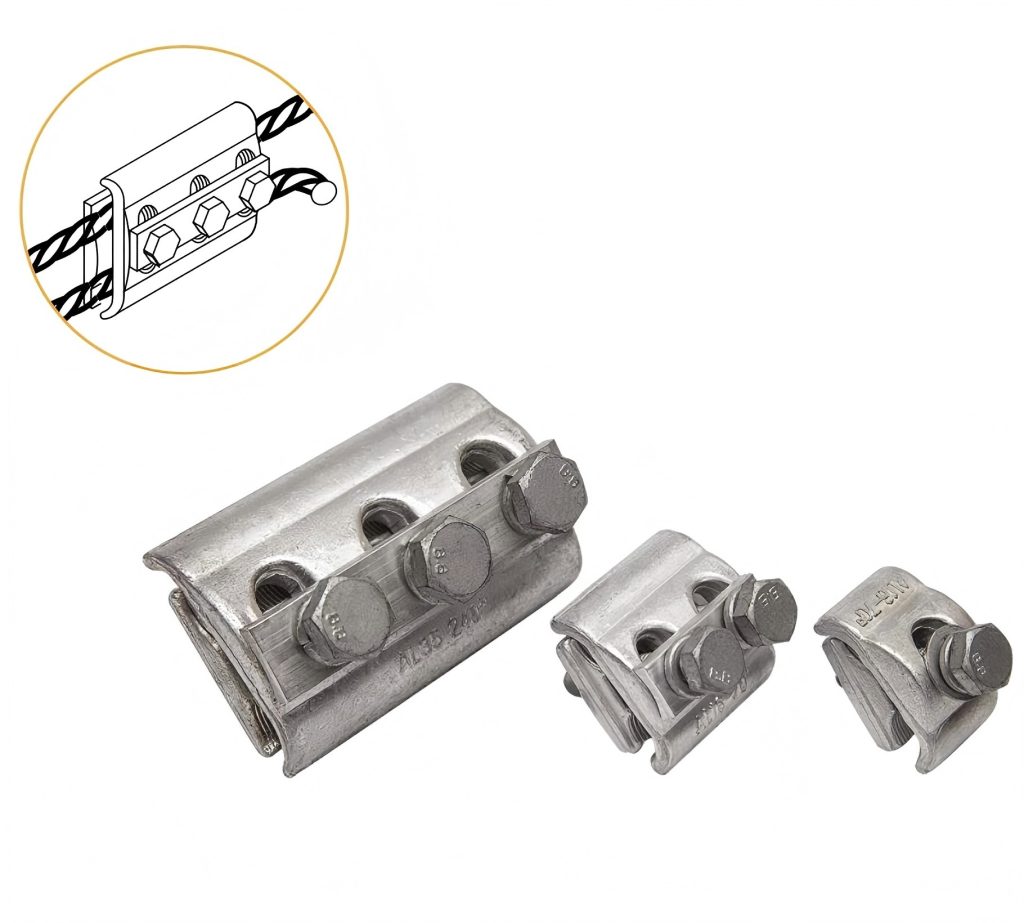The wedge parallel groove clamp is a critical yet often overlooked component in power distribution systems. Unlike traditional H-type aluminum crimping clamps, which suffer from limitations such as non-reusability and permanent installation, this innovative design addresses common installation challenges. In many Chinese applications where ejection guns are used for installation, traditional clamps frequently result in uneven compression – one side being overly tight while the other remains loose, ultimately compromising connection quality.
The wedge parallel groove clamp features an intelligent design with an axially symmetric scale on its inner wedge, enabling precise monitoring of wire/cable tightness on both sides to ensure optimal connection performance. The device consists of:
A clamp base with specially designed grooves:
Dual semicircular wire channels
An interconnecting wedge channel
An inner wedge that precisely fits the groove configuration, featuring:
Sidewall channels matching the wire grooves
Multiple equidistant calibration lines on its upper surface

Key Design Characteristics:
The calibration lines radiate symmetrically from the centerline of the wedge’s upper surface
Lines extend straight from the center to the edges of the wedge face
During installation, wires/cables are inserted into the side channels
The wedge is then driven toward the narrower end of the clamp groove for compression
Operational Advantages:
Real-time compression monitoring through visible calibration line alignment
Enables precise adjustment of left/right side compression
Ensures balanced, secure connections for both conductors
Provides visual confirmation of proper installation
This innovative design significantly improves upon traditional methods by offering:
Adjustable compression control
Visual installation feedback
Balanced connection force distribution
Enhanced reliability in power connections
